Welcome to Nairobi, Kenya! This vibrant hub for culture, tourism, and cuisine in southern Kenya is one of the largest cities in East Africa. Its name comes from the Maasai phrase Enkare Nairobi, or “place of cool waters.” With its bustling city life, rich history, and stunning natural beauty, Nairobi offers a one-of-a-kind experience for adventurers and culture enthusiasts alike.
The city dates back to the founding of a railway depot in a brackish African swamp in 1899. European colonizers displaced the local people, who included the pastoral Maasai, the Akamba, and the Kikuyu people. Over the years, the depot and its surroundings expanded until it became Kenya’s capital and largest city.

Nairobi is a dream to explore. It’s filled with hidden gems among its vibrant markets and tourism hotspots. Every adventure offers the opportunity to meet incredible people, taste exquisite local food, and immerse yourself in Nairobi’s beautiful culture. From exploring the iconic Nairobi National Park, where you can witness majestic wildlife up close, to trying hearty and authentic Kenyan cuisine in Muthurwa Market, Nairobi offers a unique blend of natural beauty and vibrant culture.

Whether you want to delve into the city’s cultural scene, learn about the country’s economic challenges, or sink your teeth into the city’s most exotic fare, Nairobi has you covered. Don’t miss the opportunity to learn about the Maasai culture and traditions firsthand. I explored Kenya in November 2022 with my friends Obed and Sam from Kumbukumbu Tours, who provide top-notch travel experiences in several African nations.

The experience I had with my guides was unparalleled and made traveling through Kenya a joy. I quickly learned that, although they may share a continent, Kenya is a world away from Ghana, a country I explored back in 2021. These are the top things you must experience in Nairobi, Kenya.
During our visit to a local porridge factory in Nairobi, Kenya, we tried a local dish called uji. Uji is a thick porridge made from a mixture of cereals, including millet. Uji is especially important to the local community here, as it’s very inexpensive and fights malnutrition. It’s a bit nutty and has a hint of sweetness, and takes only ten minutes to make. James, the man in charge, starts by washing and straining dry millet, sorghum, and ground nuts before grinding them into the uji.
While the raw version is healthier, some prefer it cooked to eliminate potential bacteria. I had the chance to try both variations. I much preferred the cook version! After the initial preparation, he places the uji in a bucket and leaves it to ferment overnight. If you want your uji sweeter, sugar, honey, or sugarcane juice can be added.
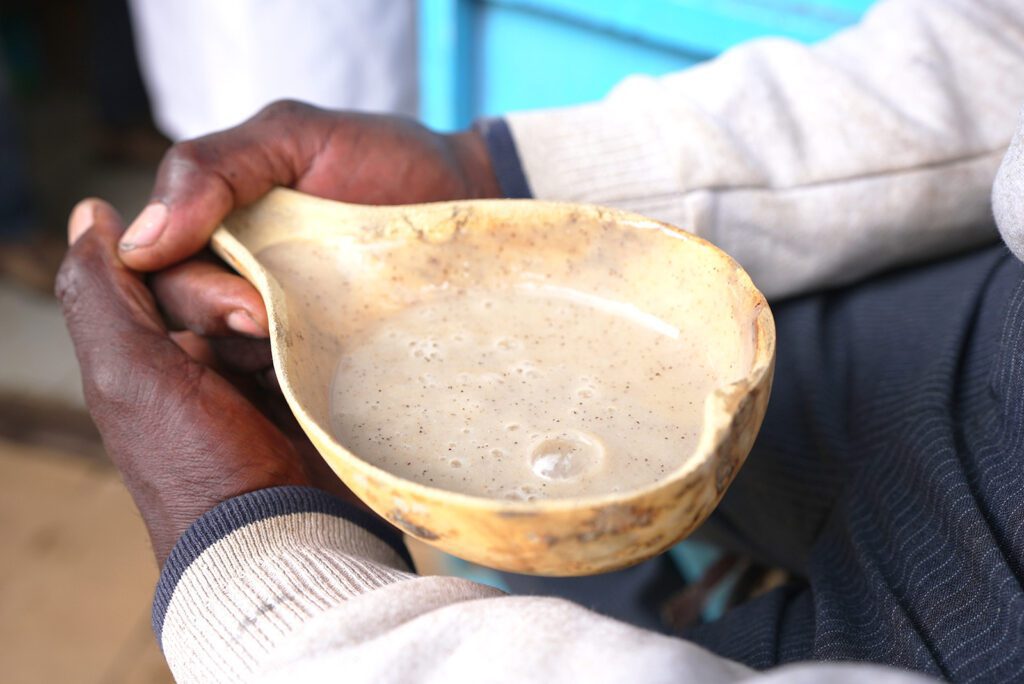
I was so impressed with what James does every day. He’s taken it upon himself to help feed and nourish Nairobi locals with a simple yet healthy and cost-effective dish. It was an incredible look at an extremely important food in the local community.
You can’t properly experience Nairobi, Kenya without eating the national dish, nyama choma. A traditional grilled meat dish, nyama choma usually consists of tender, grilled goat, though beef and lamb can also be used. The dish originated with the Maasai people, who immigrated to East Africa from the northern part of the continent.
I got my first taste of nyama choma at a local restaurant called Bayley’s, where they had several fresh goat carcasses hanging in the windows. My guide, Obed, suggested we go with a young goat that has lived off more milk than grass, which changes the quality of the meat.
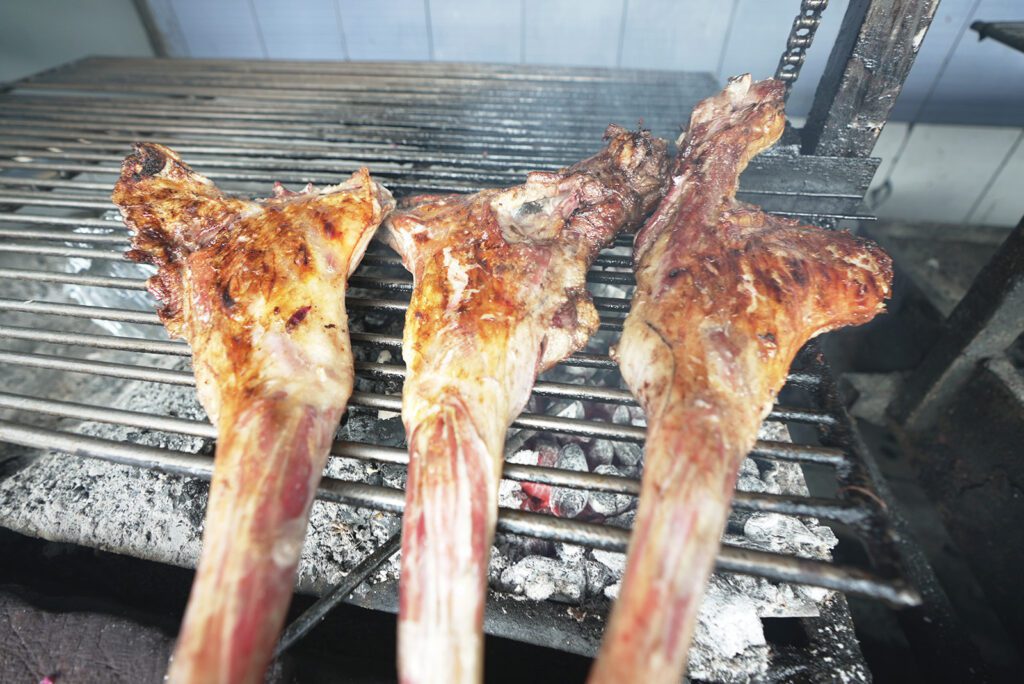
Our nyama choma was tender, juicy, and salty. It was grilled to perfection, with a crispiness and a bit of char on the outside. We enjoyed it with a spread of other local dishes including sukuma wiki (a rustic dish made from collard greens), kachumbari (a tomato-and-onion salad or salsa), irio (a mixture of mashed potatoes, corn, and peas), and ugali (a thick, cornmeal paste). It was fantastic!
If you want a true East African experience in Nairobi, Kenya, a trip to Muthurwa Market is a must. This large and bustling market is the largest in the country and offers everything from fresh produce to street food. As I explored, I tried some ridiculously spicy chilies that were so hot they almost made me sick!
You can also sample an earthy bean dish called githeri made wtih flavorful tomatoes and herbs. The chapati served with it was crispy and slightly oily. The market offered a range of food options, including steamed corn on the cob, brown ugali made with millet flour, and various types of ugali made from cassava, corn, millet, and wheat. I loved the ugali made with millet flour, paired with managu greens and a beef stew.
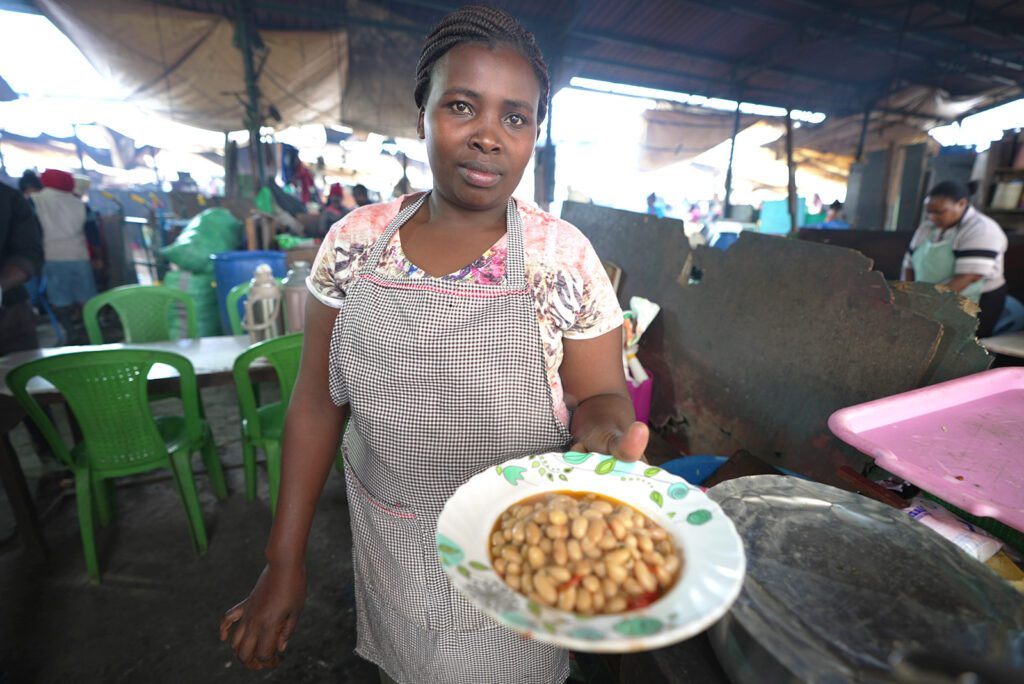
I also met a vendor preparing a dish called rolex, a delicious dish consisting of a chapati containing eggs, tomatoes, cilantro, and onions. The rolex had a slightly doughy center but was bursting with flavor. I also tried dried saltfish, watermelon, sugarcane (which was sweet and refreshing), pineapple, and a unique passion fruit with crunchy seeds. The people were so friendly and accommodating, and the food blew me away!
Of course, you can’t paint a full picture of Nairobi, Kenya without getting a look at its impoverished, less fortunate side. The city is home to Kibera, the largest urban slum in Africa. Signs of poverty are everywhere here, but despite its challenges, Kibera is a vibrant neighborhood filled with stories of survival and the resilience of the human spirit. The population of Kibera ranges from 200,000 to 1.2 million, depending on who you ask.
As I walked the streets with my guide Obed, I came across street food vendors selling delicious snacks like samosas (a dish adopted from Kenya’s Indian influences) and dishes made from corn and beans. The locals were friendly and eager to share their culture with me. I also encountered a woman making handmade clothes and tasted a sweet and flaky chapati, which was the best I had ever eaten.
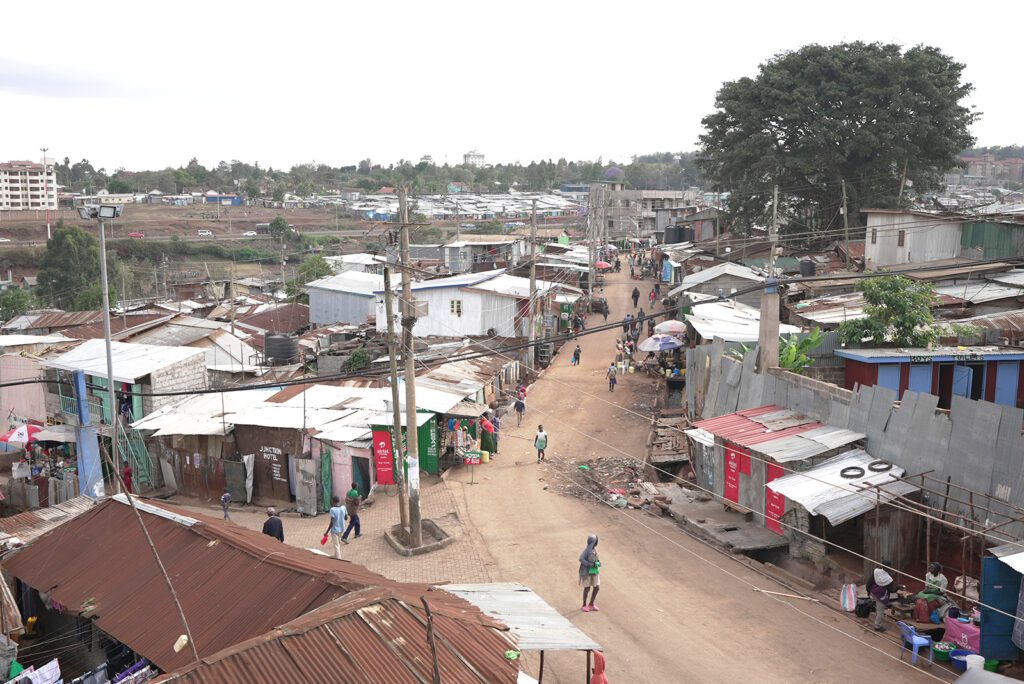
The neighborhood kids were friendly and sweet, and fascinated by the anime characters on my jersey. They even ran alongside me as I explored further. Inside a humble home, I met a woman and her beautiful baby, who graciously allowed me to film a bit of their daily life.

I even visited a local bar locals gather. It’s a friendly and lively atmosphere—perhaps a bit too friendly. As I left Kibera, I couldn’t help but reflect on the challenges faced by its residents and their enduring spirit. Despite its hardships, Kibera is a testament to the strength of the human race and is a must-visit when in Nairobi, Kenya.
Explore the enchanting landscapes and vibrant culture of Malawi with our curated list of must-visit destinations.
Carnivore Restaurant in the middle-class suburb of Laganta outside of Nairobi, Kenya is a must-visit for any food lover. Established in 1982, Carnivore used to offer a wide variety of rare and exotic bush meats, including giraffe, wildebeest. However, after the Kenyan government outlawed the sale of game meat 2004, the restaurant removed many of their more shocking offerings.
Some exotic dishes, like ostrich meatballs, crocodile, and ox balls, remain on the menu. Less adventurous eaters will be happy to know that they also serve pork, beef, chicken, lamb, and turkey. The dining experience at Carnivore is inspired by Brazilian steakhouses, with waiters bringing the meat directly to your table. A flag on each table signals whether you want more. The meal begins with their famous dawa drink, which is citrusy and refreshing.
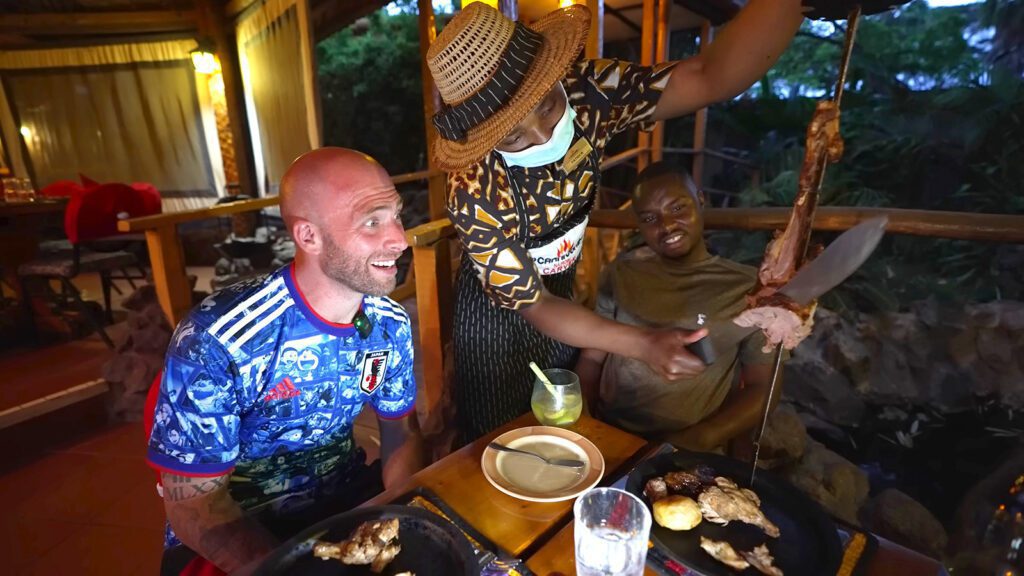
They also bring a spread of sauces include garlic, wildberry, mint, chili, fruit salsa, and tomato relish, which pair well with their meats and fried potatoes. They recommend that you pair each meat with a specific sauce for optimal flavor. Their spicy courgette soup and fried potatoes were great, but the meats were the stars of the show.
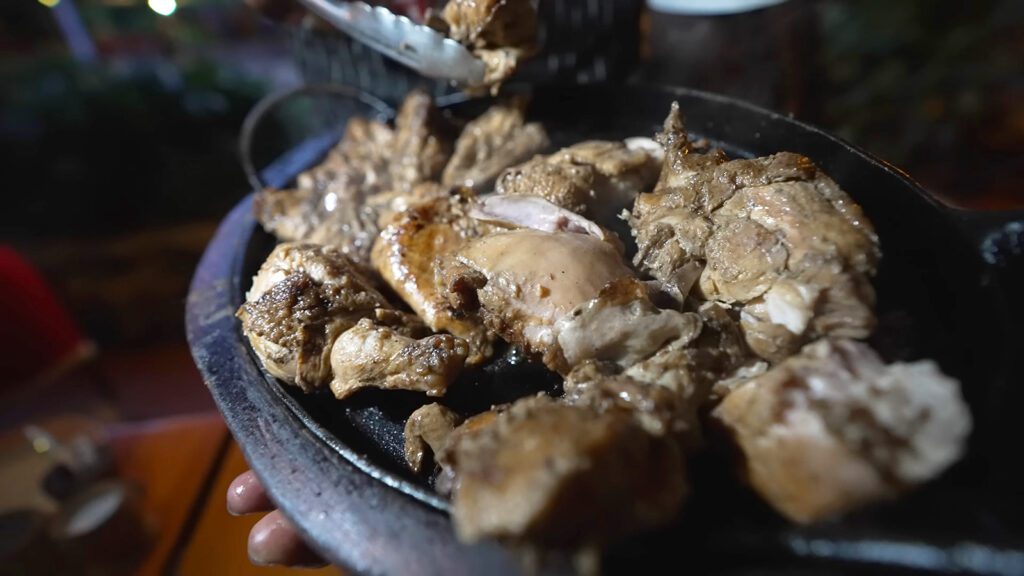
I loved the crocodile with creamy garlic sauce, tender ostrich meatballs with wildberry sauce, and flavorful lamb with mint sauce. The pork spareribs were small but packed with flavor, and the fruit salsa added a delicious sweetness to the chicken.
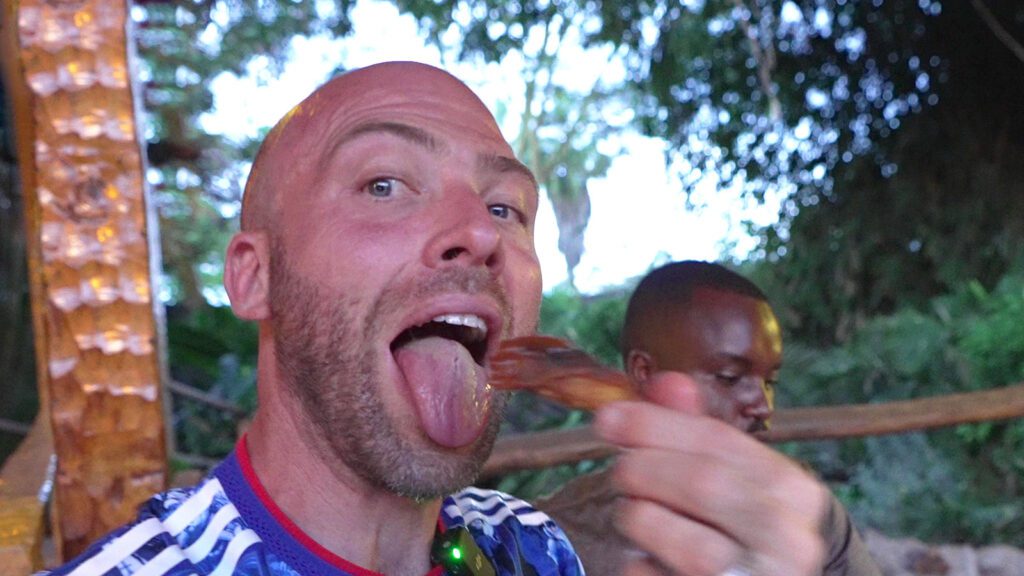
Finish up with a rich chocolate tart or ginger pudding for dessert. They’re both decadent options to finish up your exotic meat meal in Nairobi, Kenya!
If you head to Moi Avenue in the bustling, modern business center of the city, you’ll find the Masai Market Workshop. It’s a great place to learn about the Maasai culture in the middle of the city. It reminded me of my time in Johannesburg, South Africa!
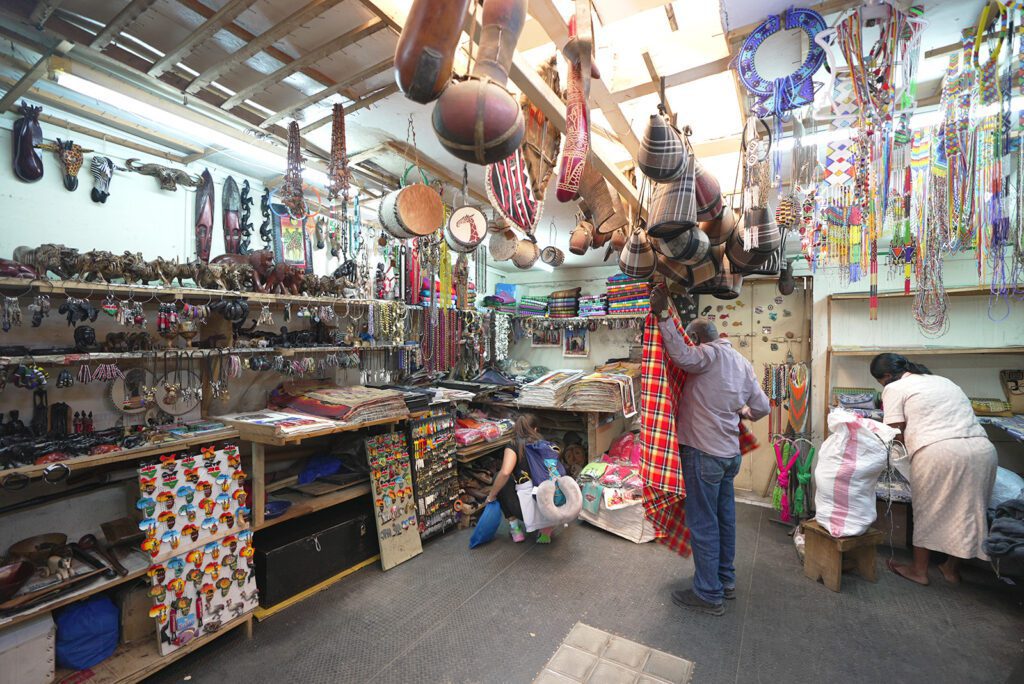
The workshop offers a variety of handcrafted items such as sculptures, statues, masks, jewelry, and traditional Maasai clothing. You can also find an impressive selection of painted decorative plates, paintings, and carved animals made from ebony wood.
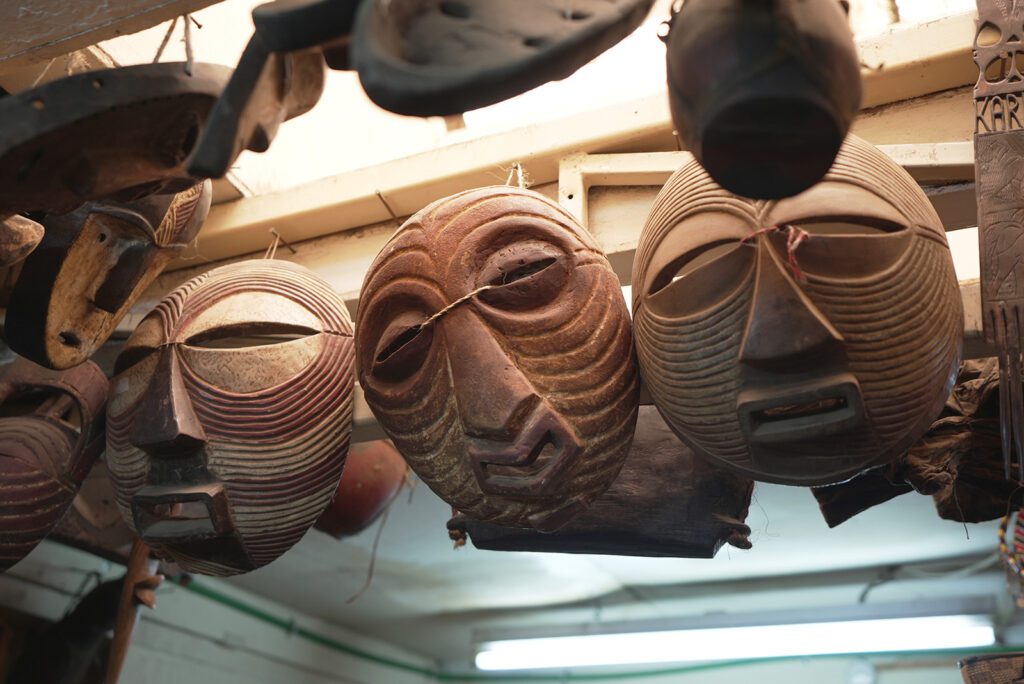
It’s a fantastic place to buy keepsakes for yourself and for friends and family! The craftsmanship in the different pieces was stunning. You can tell a lot of time and effort goes into making their art. I love supporting local artisans, so please stop by and visit them when in Nairobi, Kenya!
Throughout my time in Nairobi, Kenya, I had the opportunity to explore the local street food scene in-depth. One of the first dishes I tried was mayai chemsha, a boiled egg filled with a tomato-and-onion salsa called kachumbari. The dish was flavorful, with a perfect balance of sweetness and bitterness.
Arguably my favorite street food in Nairobi, Kenya was a controversial dish called mutura. A sausage made of grilled cow intestines stuffed with minced beef, blood, herbs, and spices, the dish is considered unhygienic by many.

I tried mutura grilled right on the street and served with kachumbari. The dish had an incredible texture, and a heavy, meaty, iron-rich flavor that exploded all over my taste buds. I loved every bite!

Along Slip Road, you may find a spot offering various dishes like wild cabbage, chai, intestines, beef with tomatoes, ugali, white beans, and sliced chapatis. Everything is meant to be eaten with your hands, which is my favorite way to eat!
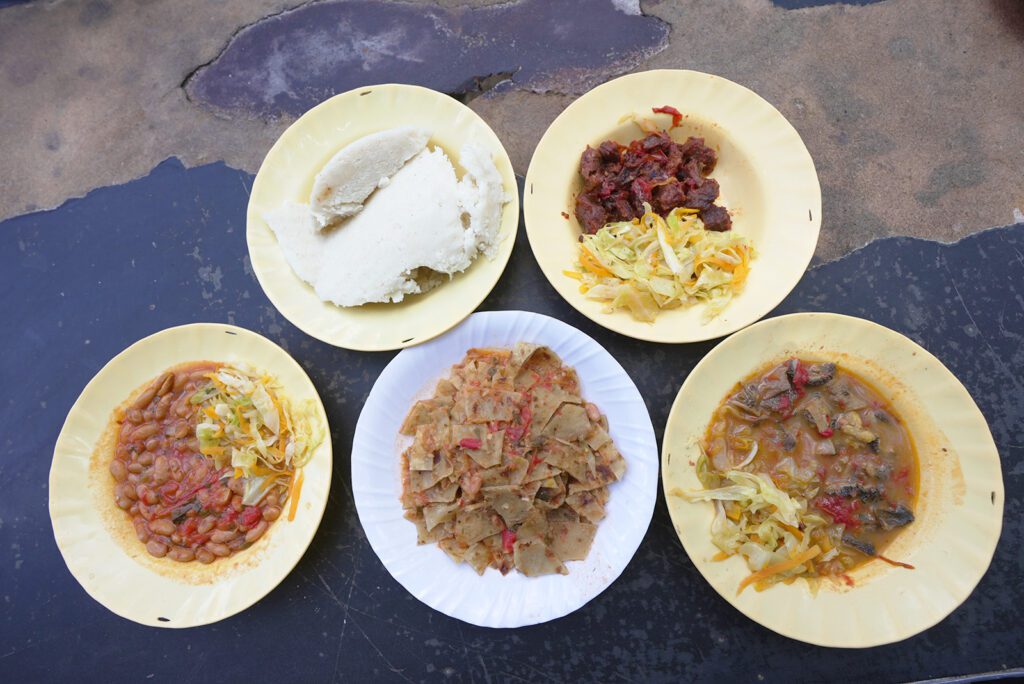
The intestines were a highlight, as were the beans. But my favorite dish was probably the simplest: the sliced chapatis soaked in tomato-rich bean gravy. I couldn’t get enough of it, and I don’t think you will, either!
Of course, you can’t visit Nairobi, Kenya without visiting Nairobi National Park. Located just 4 miles from the center of Nairobi, the park is Kenya’s first national park. It’s similar to other African safari parks, but it’s also unique in that it’s the world’s only protected area within a capital city.
Despite its proximity to the city, the park is home to a diverse range of wildlife, including giraffes, lions, leopards, buffalo, zebras, baboons, cheetahs, and even the elusive black rhinoceros.
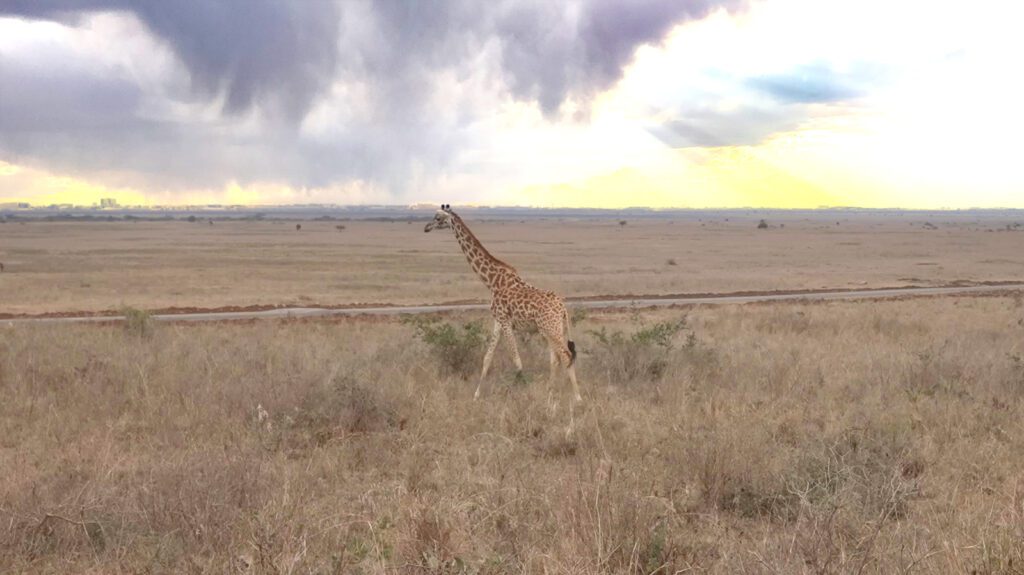
Established in 1946, the park serves as a popular tourism destination for both locals and travelers. However, it also faces threats such as agricultural practices and poaching due to its close proximity to the city.
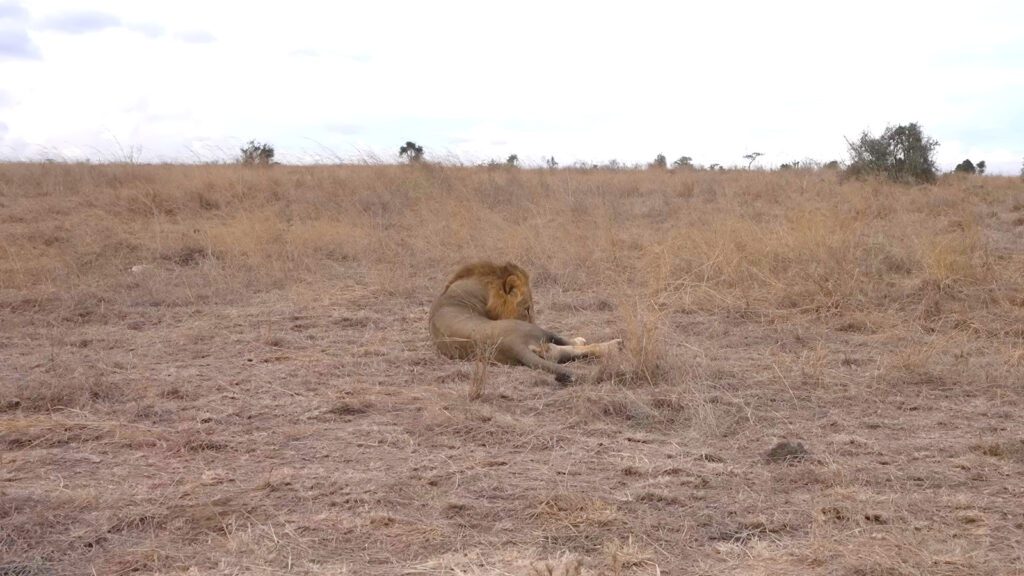
Inside the park, I got to encounter animals such as warthogs, cape buffalo, impala, zebras, guinea fowl, white rhinos, and giraffes from the safety of our vehicle. But the best moment came when we got to witness two lions mating! It’s an incredibly rare sight, so getting to see it is something I’ll never forget!
If you love meat as much as I do, Club Charina in Nairobi, Kenya is a must-visit. The restaurant and club offers a wide variety of grilled meats nyama choma and traditional sides like ugali. But as much as I love nyama choma, my favorite dish of theirs is kichwa ya mbuzi. This unique dish is a stew made from goat head, similar to the pache I ate in Iraq.
The kichwa ya mbuzi broth is vibrant and spicy, and I loved the delicious and fatty goat leg with salt. Our meal came with fresh kachumbari, ugali, and managu on the side. The highlight of the experience was tasting the goat head itself, starting with the tongue and moving on to the eye socket. It may seem too extreme for some, but if you’re willing to give it a try, I think you’ll enjoy it!
It’s easy to leave Nairobi, Kenya with conflicted feelings. On one hand, the people and culture are vibrant and beautiful. The people themselves are resolute yet friendly, making the city a joy to explore. But on the other hand, it’s hard to see the abject poverty many of its people live in without being angry and frustrated.
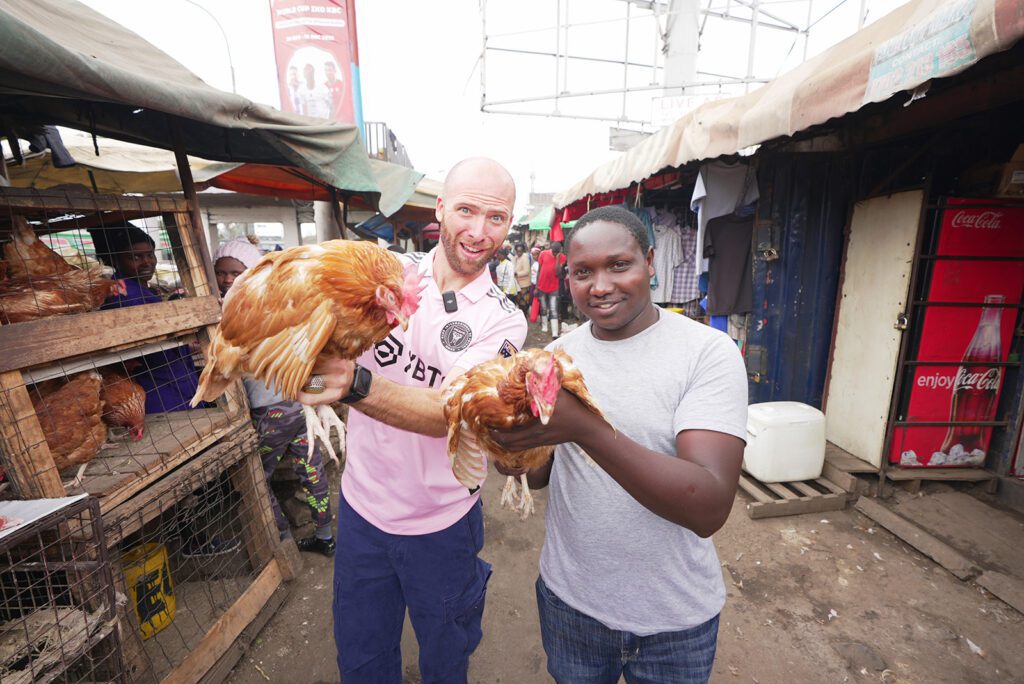
Nairobi is a city of contrasts, for sure. And while its extremes are a part of its reality, so are its cuisine, natural beauty, and national park. It’s gorgeous and complex, like many places around the world. And that’s what makes it a must-visit destination. Book a flight to Nairobi, Kenya to experience it for yourself!
Counter
101 Countries • 1432 Cities